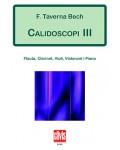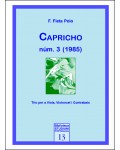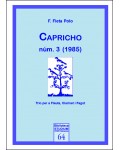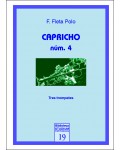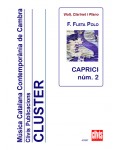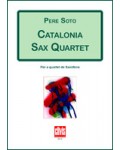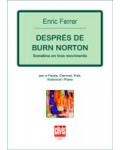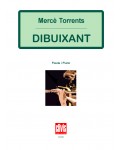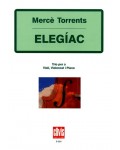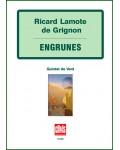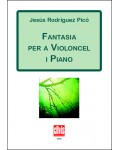
No products
Prices are tax included
Product successfully added to your shopping cart
There are 0 items in your cart. There is 1 item in your cart.
- English
- Castellano
- Català
Digital Sheet Music There are 449 products.
Subcategories
-
Calidoscopi III
Edition: DigitalCalidoscopi III by F. Taverna-Bech is not just a descriptive work but features numerous reflective elements and a certain melancholy, like a flow of nostalgia for other times when, as a child, he was captivated by the toy.
15,13 € -
Capricho núm. 3 (1985)
Edition: DigitalThe initial cell of the descending arpeggio gives unity to the work that, despite its briefness, clearly shows the personality of Fleta Polo’s language and his deep knowledge of the different instruments he writes for.
10,47 € -
Capricho núm. 3 (1985)
Edition: DigitalThe initial cell of the descending arpeggio gives unity to the work that, despite its briefness, clearly shows the personality of Fleta Polo’s language and his deep knowledge of the different instruments he writes for.
10,47 € -
Capricho núm. 3 (1985)
Edition: DigitalThe initial cell of the descending arpeggio gives unity to the work that, despite its briefness, clearly shows the personality of Fleta Polo’s language and his deep knowledge of the different instruments he writes for.
10,47 € -
Capricho núm. 4
Edition: DigitalThe first movement is almost a perpetual movement in which the imitative writing stands out from the first to the last bar. The second movement, slower and reflexive, raises an issue that is revealed on three occasions.
8,72 € -
Caprici núm. 2
Edition: DigitalIn the opening section of Caprici núm. 2 by F. Fleta Polo the instruments are presented one by one through the use of solo parts, before merging to form the chamber piece proper, and the contrapuntal writing can be seen throughout in a piece whose appeal lies in its contrasts in colour and character.
9,30 € -
Catalonia Sax Quartet
Edition: DigitalA work with dynamic great wealth using all the instrument's resources.
13,96 € -
Després de Burn Norton
Edition: DigitalThis Sonatina is inspired by the first of the Four Quartets by T. S. Eliot, Burn Norton.
16,29 € -
Dibuixant
Edition: DigitalDibuixant by Mercè Torrents has three movements. In the first the piano continuously draws a picture while the flute expands on this, singing in various registers. The second movement describes a sense of calmness through the flute in a low register, while the piano follows it with slow chords.To end the work, the third movement brings us back to...
9,30 € -
-
Engrunes
Edition: DigitalIt was originally a collection of twelve short pieces for piano. This version consists of six «crumbs» and the author transcribed it from the original for piano more than 25 years later.
16,64 € -
Fantasia per a violoncel i piano
Edition: DigitalThe “fantasy” concept includes that of a movement-less piece, with a very free format that is playful in its use of contrasts, combining this initial theme with more dynamic fragments. In spite of this thematic reappearance, the work does not correspond to the rondo form, but the formal freedom is the one that commands.
7,85 €







